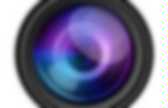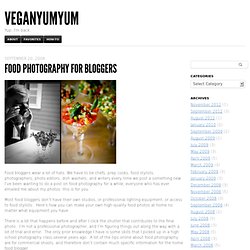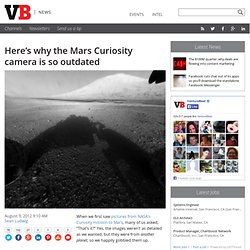

Photography Video blog for photographers. Digital Photography Tips and Tutorials. Food Photography for Bloggers. Food bloggers wear a lot of hats.

We have to be chefs, prep cooks, food stylists, photographers, photo editors, dish washers, and writers every time we post a something new. I’ve been wanting to do a post on food photography for a while; everyone who has ever emailed me about my photos: this is for you. Most food bloggers don’t have their own studios, or professional lighting equipment, or access to food stylists. Here’s how you can make your own high-quality food photos at home no matter what equipment you have.
There is a lot that happens before and after I click the shutter that contributes to the final photo. Workflows and techniques are very personal, so I’m sure other food bloggers out there achieve fabulous results doing things differently than I do. Dishes Above is just one part of my dish collection, and it grows all the time. The right dish really sets the overall look for the photo. 1.
Also look online for fun dishes. Plan Ahead. Digital photography, photo software. Lowel EGO Lights for Food Photography. Sunday, February 3, 2008 Lowel EGO Lights for Food Photography Thai Beef Salad above taken probably around midnight, on auto settings with my Canon Rebel XT, Lowel EGO lights for food photography are magical.

During late Spring to early Fall months at the Steamy Kitchen household, my photo “studio” was the ratty ottoman and a $3 foam board near a big open window. Ahhhh….I so miss those late sunset evenings where I could still capture wonderful natural lighting even at 7:30pm. Now in the winter months, by the time the clock rolls around to 5pm, my light is gone (sniff sniff) and I don’t like using my flash. So I set out to find an inexpensive, portable solution and came up with the Lowel EGO lights. Lowel EGO Digital Imaging, Tabletop Fluorescent Light Unit: Camera & Photo.
Bokeh. Bokeh © 2008 KenRockwell.com.

All rights treserved. see also Bokeh Comparisons Among Six Nikon Lenses. Bokeh describes the rendition of out-of-focus points of light. Bokeh is different from sharpness. Sharpness is what happens at the point of best focus. Bokeh describes the appearance, or "feel," of out-of-focus areas. Unfortunately good bokeh doesn't happen automatically in lens design. Differing amounts of spherical aberration alter how lenses render out-of-focus points of light, and thus their bokeh. A technically perfect lens has no spherical aberration. If the film is not exactly where that cone of light reaches its smallest point, then that point of the image is not in focus.
There are no perfect lenses, so one usually does not see these perfect discs. Real lenses have some degree of spherical aberration. Illustrations Example of Bad Bokeh. Spherical aberration means that the discs made by out-of-focus points on the subject will not be evenly illuminated. Reflex and Mirror Lenses. Tintypes on the Behance Network. I have a tintype portrait studio called Photobooth, on Valencia Street in San Francisco.

Over the past year, I've had about 3500 people come through the door, sit in front of the camera and have their portrait made. Some of them came looking for me and some just wandered in and asked what we were doing there. Either way, I do not choose who I photograph, and I like the exercise of being constantly confronted with new people and having to figure out what I find interesting about them. I prepare each tintype plate by hand and make a single exposure of each person (occasionally two, if I make a mistake). The tintype is processed immediately so the subject can walk out the door with it about 15 minutes later. There's a short video at the bottom of this page (made by the good folks at Cool Hunting), that shows our shop and explains how the process works. Photobooth. Here’s why the Mars Curiosity camera is so outdated. When we first saw pictures from NASA’s Curosity mission to Mars, many of us asked, “That’s it?”

Yes, the images weren’t as detailed as we wanted, but they were from another planet, so we happily gobbled them up. But why does the Mars rover feature paltry 2-megapixel sensors on its main imaging cameras? The decision stems from planning of the rover’s systems back in 2004, Malin Space Science Systems project manager Mike Ravine told Digital Photography Review. The planning team selected the 2-megapixel sensor on Curiosity for several reasons. First, it had to produce a reasonable amount of data for transmission back to Earth via a UHF transmitter. “We developed all four cameras around a common architecture, so the choice of sensor was hedged across all of them,” Ravine said. In light of advanced camera technology featured on today’s smartphones, Ravine seems slightly disappointed the images on Mars aren’t more breathtaking.
Stolen Camera Finder - find your photos, find your camera. New Photo Technica. Digi Pixels. IMAGES. Photasme.